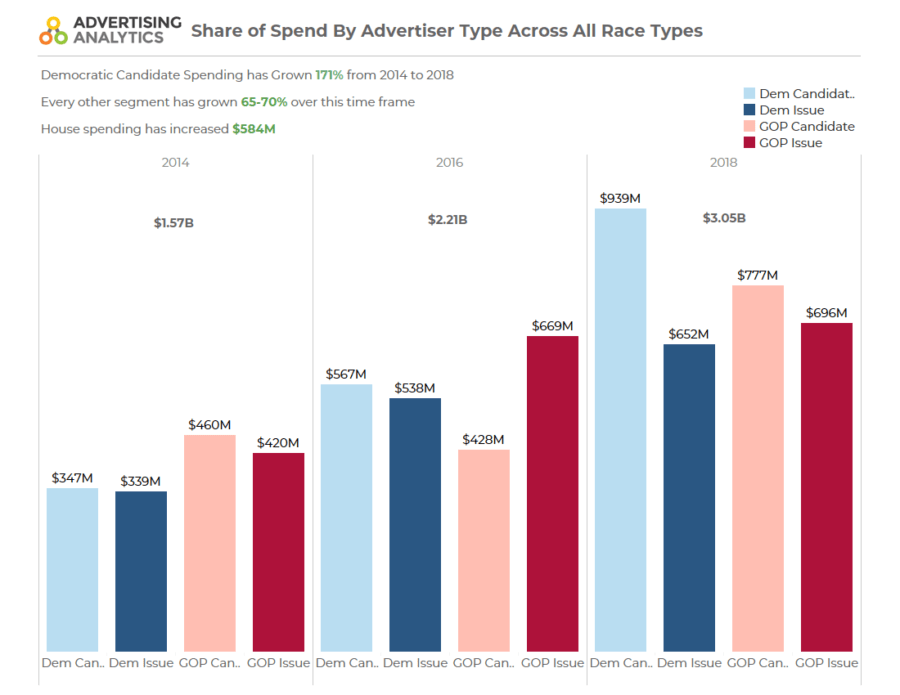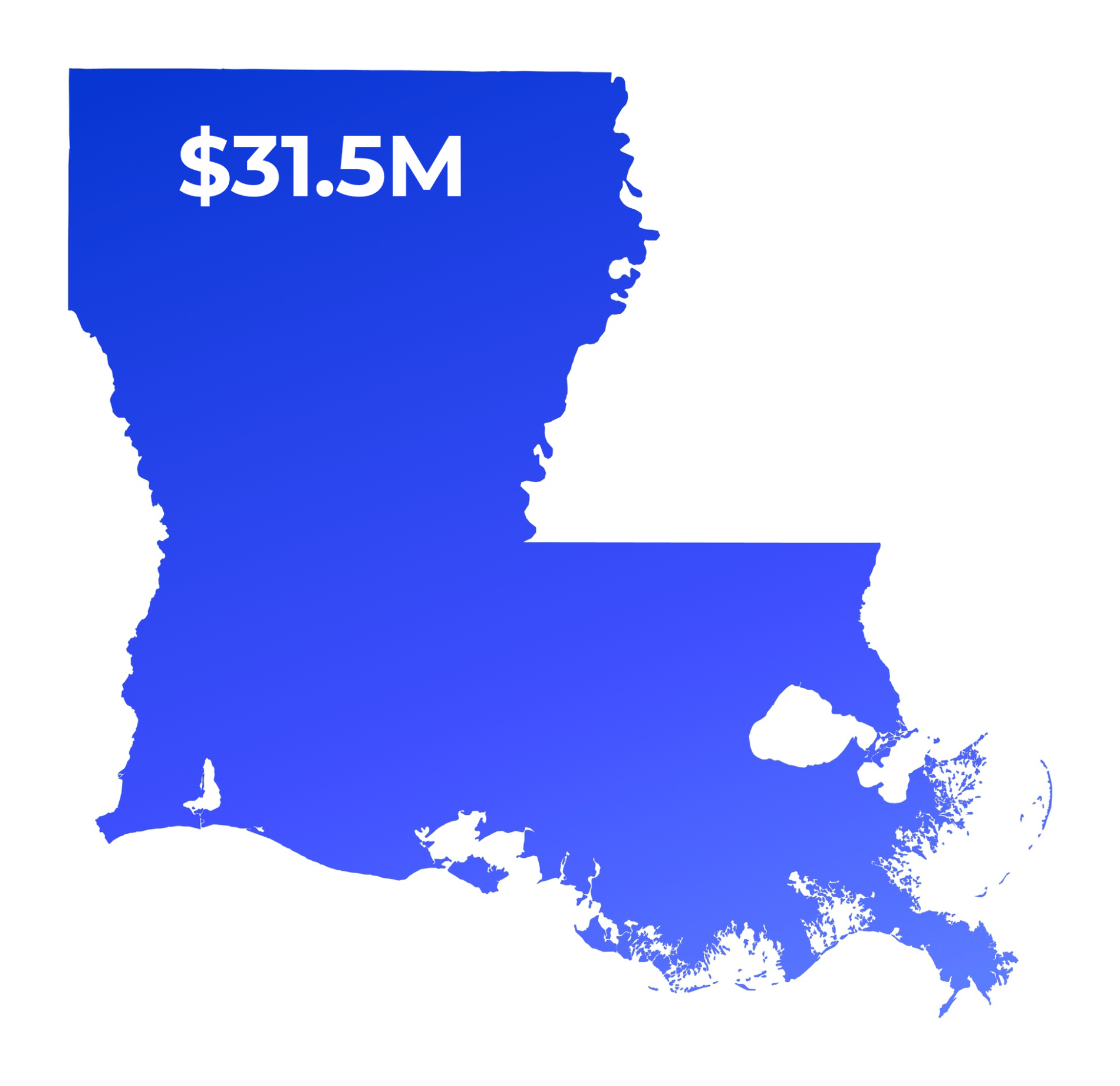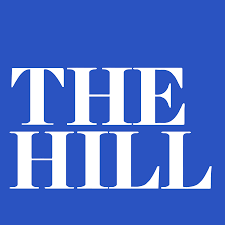October 9, 2019
Over the past eleven years, there has been a revolution in campaign financial operations. In 2008, the Obama campaign redefined what was possible by declining public financing and still amassing huge sums of money. Since this decision, no major candidate has accepted public financing, and it seems unlikely that one will without a major change to the system. Campaign finance changed again in 2010 when Citizens United vs. FEC opened the playing field to unlimited spending from Super PACs. Since 2010, campaigns large and small have increasingly embraced the internet’s organizing and fundraising potential – once again altering the landscape of campaign finance. Citizens United is often seen as the most important campaign finance change, but the precedent set by Obama and the subsequent decline of public financing of elections has pushed candidates towards the internet and allowed them to raise nearly unlimited amounts of money.
Political Advertising Trends Since 2008
Ever since Citizens United, Super PACs have been the boogeyman of American politics and are especially demonized by the left. Who can forget Stephen Colbert’s SuperPAC, or the endless hand-wringing over the Koch brothers and their impact on American politics? It is not for us to decide whether these decisions are “good” or “bad,” but we can quantify some of the effects of PAC spending. The below chart shows spending by GOP and Dem candidates (light red and blue respectively) and issue groups (dark red and blue) over the past three election cycles. It is clear that issue group spending never dwarfed candidate spending as it was often portrayed, and indeed there has been a dramatic shift towards increased candidate spending. This isn’t to say that PACs don’t have a significant amount of sway in elections, but it does suggest that the Citizen’s United decision did not amplify the voices of corporations to the extent the left feared.

In 2018, we saw candidate spending on both the Democratic and Republican sides exceed issue group spending for the first time in several cycles. Democratic candidates specifically saw a huge increase in spending. This is likely due to several factors: a large number of House retirements, Senate incumbents in tough seats, and anger against President Trump. However, the internet and ActBlue gave Democrats the ability to translate these factors into huge fundraising hauls. Republican candidates also made large gains, but they were outpaced by their Democratic counterparts.
We have already seen an immediate response to this imbalance in spending. WinRed, the GOP equivalent to ActBlue launched to great fanfare. Though it will likely take some time to reach the level of ActBlue, this tool will help address the imbalance in fundraising. The largest factor in GOP fundraising though will be President Trump at the top of the ticket. The Trump campaign, in coordination with the RNC, raised a staggering $125M in the third quarter. Given that fundraising generally peaks in Q3 of the election year, there is huge room for growth in this already impressive number.
Democrats have raised healthy sums in the primary, with Sanders and Warren leading the field at about $25M each, but even cumulatively they still haven’t matched what the President has raised. Together Democrats have raised about $111M, with several smaller candidates yet to report. The President’s ability to raise money in coordination with the RNC is already a massive advantage. Recent history tells us that the Democratic candidate will not be lacking for cash, but they will likely start the general at a disadvantage.
2016 saw far less Republican spending than expected but concerns that dogged Trump in that cycle have largely been alleviated. His huge fundraising hauls in coordination with the RNC show that the party has embraced him, at least from a fundraising standpoint. Trump’s ability to pull in big money will be one factor in huge 2020 spending figures. We expect to see $2.7B spent across television and digital in the 2020 Presidential election alone. This number might even grow as campaign fundraising smashes records and outside groups on both sides line up to back their favored candidates. Candidate spending will increase across the board, too. Both the House and Senate are potentially up for grabs, and with Trump at the top of the ticket, and a fired up liberal base, federal candidates show no sign of decreased fundraising ability.
Increased candidate spending is beneficial for campaigns due to the favorable rates they receive relative to issue groups. A dollar spent on advertising by a campaign will go farther in reaching potential voters than money spent by issue groups. This means that an advantage in candidate spending cannot be matched by equal dollars from an outside group. any group would need to invest twice as much money to receive an equal amount of broadcast ads because issue group rates are about twice as high as candidate rates. These factors make it hugely advantageous to channel money through candidates as much as possible., and the use of internet fundraising platforms like ActBlue, and now WinRed, make candidate spending an accessible and economical option.
The advent of high candidate fundraising was arguably Obama’s 2008 decision to forego public funding, and ten years later in 2018 we saw candidate spending skyrocket. Despite the Citizens United decision, advances in internet messaging and fundraising have ensured candidate voices are not lost among the PACs. With a contentious presidential election ahead, and competitive races across the country, 2020 will see even more money than 2018 – thanks in part to the evolution of campaign finance.






